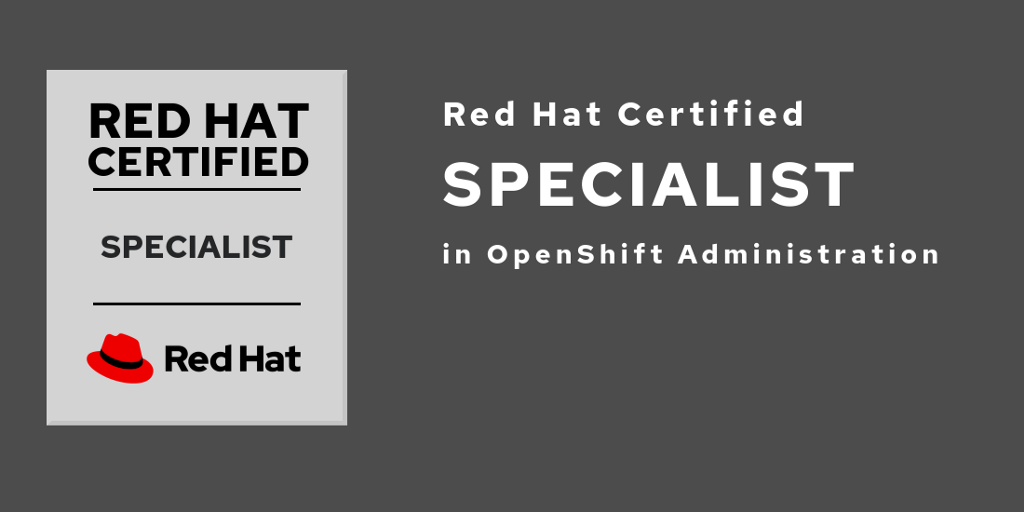
Road to Red Hat Certified Specialist in OpenShift Administration
Road to Red Hat Certified Specialist in OpenShift Administration
19 June 2020
Jelle Vercalsteren

I’m very proud that, as of June 2020, I am able to call myself a Red Hat Certified Specialist in OpenShift Administration. The only experience I had with OpenShift was during the Red Hat OpenShift Deep Dive course in November 2018. However, I had not used Red Hat OpenShift ever since.
In this blog post, I will tell you everything about my exam preparations.
WHY CERTIFY YOURSELF IN RED HAT OPENSHIFT?
Red Hat OpenShift is an open source container application platform based on the Kubernetes container orchestrator. Red Hat OpenShift is used in a lot of modern environments to provide a quick and easy way to set up clusters for application development and deployment.
There are 2 possible paths in the Red Hat OpenShift certification:
– Red Hat Certified Specialist in OpenShift Administration
– Red Hat Certified Specialist in OpenShift Application Development.
Red Hat Certified Specialist in OpenShift Application Development is a path targeted at developers. As you may have guessed, this certification focuses more on the development capabilities in Red Hat OpenShift. You will learn how to make optimal use of OpenShift in a development environment to streamline the development process.
Red Hat Certified Specialist in OpenShift Administration — the certification I have completed — is a path targeted at administrators. These administrators will perform the configuration of OpenShift so developers can develop without worrying about the configuration aspect.
TRAINING
I completed the Red Hat OpenShift Administration I (DO280) course to prepare myself for the exam. It can be purchased together with the exam in the Red Hat OpenShift Administration I with exam (DO281) bundle.
The course consists of different topics such as configuring authentication, controlling pod scheduling, scaling your resources and cluster, and much more. You can find the full outline of the course on the DO280 course page.
The chapters have either quizzes, guided exercises or lab exercises to help you with the training. In my opinion, the lab exercises are the most useful ones. During these labs, you have to perform certain tasks which are similar to the ones on the exam.
I would recommend doing the lab exercises multiple times to really get familiar with the commands you have to use. The time you get on the exam is limited, which means that being able to produce the right commands quickly is vital.
EXAM
For the exam, you will have to go to an official Red Hat training facility. The exam itself is very straightforward, you just log on to the computer provided and follow the instructions.
The exam lasts three hours and contains performance-based questions to perform certain tasks on a live system. You can request a break but your exam timer will not be paused. You get the documentation available to you, although the documentation structure is a bit different since it’s an offline version.
I believe the questions on the exam were fairly reasonable. There was only one question I really had difficulties with. The thing I actually struggled with most during the exam, was the keyboard. In Belgium, most of us are used to an AZERTY keyboard, but the laptop I had to use during the exam had however a QWERTY one. This has certainly slowed me down during the exam, as I am used to an AZERTY keyboard.
A tip I would like to give for the exam itself: don’t forget that the OpenShift Web Console exists. It can be very helpful in times of need.
I hope I could provide some insights on how to prepare for the Red Hat Certified Specialist in OpenShift Administration certification. Good luck with the exam!

Sorry, the comment form is closed at this time.